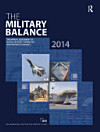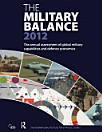Armed Conflict Survey 2021
About this ebook
Key features
· Essays on global trends in armed conflict, with a focus on the changing nature of third-party intervention, the long aftermath of armed conflicts, and economic migration and forced displacement in a COVID-19 world.
· Overviews of key events and political and military developments from January 2020–February 2021 for each conflict.
· Strategic analysis of national and regional drivers and conflict outlooks.
· Regional analyses with unique insights into the geopolitical and geo-economic threads linking conflicts across regions and globally.
· Expanded information on conflict parties.
· The Armed Conflict Global Relevance Indicator (ACGRI), an IISS proprietary indicator that combines measures of incidence and human impact with geopolitical impact to assess the global salience of armed conflicts.
· Analysis of the humanitarian, social and economic impact of conflicts.
· Conflict-specific trends, strategic implications and prospects for peace.
· More than 60 full-colour maps, tables and infographics highlighting key conflict developments and data.
· Key statistics on violent events, fatalities, military power, geopolitical salience, refugees and internally displaced persons.
· The 2021 Chart of Armed Conflict, presenting information on conflict start dates, typologies and relevant refugee flows, as well as providing a visual overview of each conflict’s geopolitical relevance, looking at 2020 UN Security Council resolutions, multilateral missions and the involvement of third-party countries.
Ratings and reviews
- Flag inappropriate








